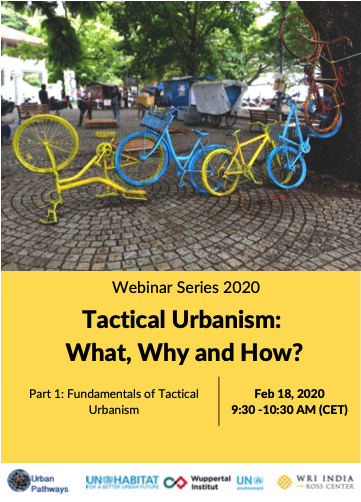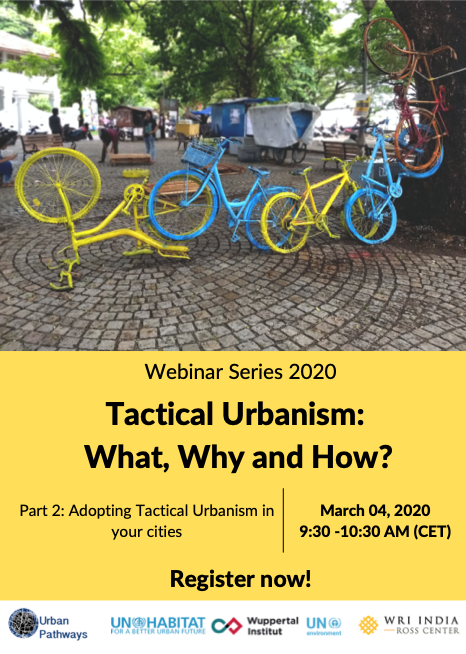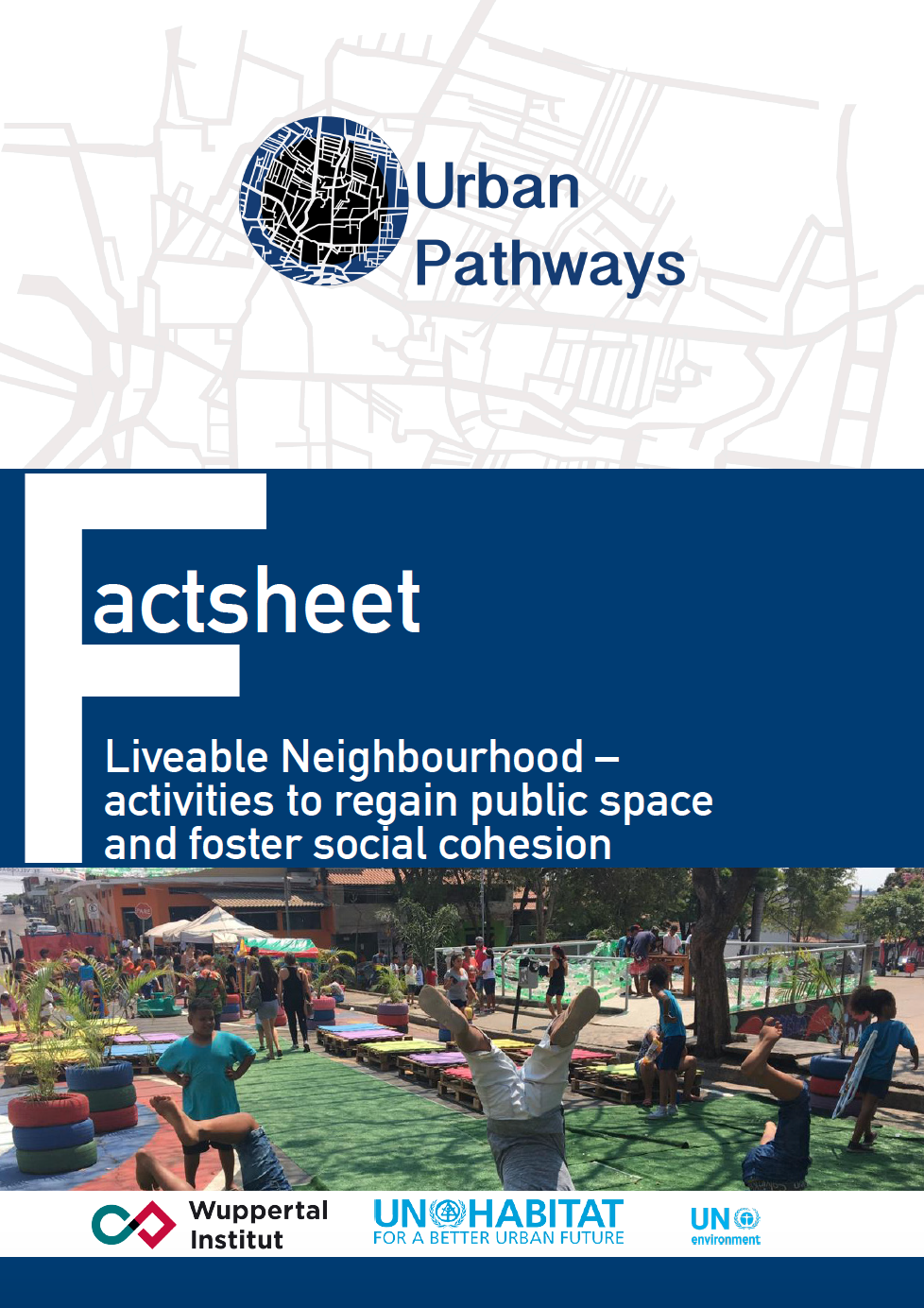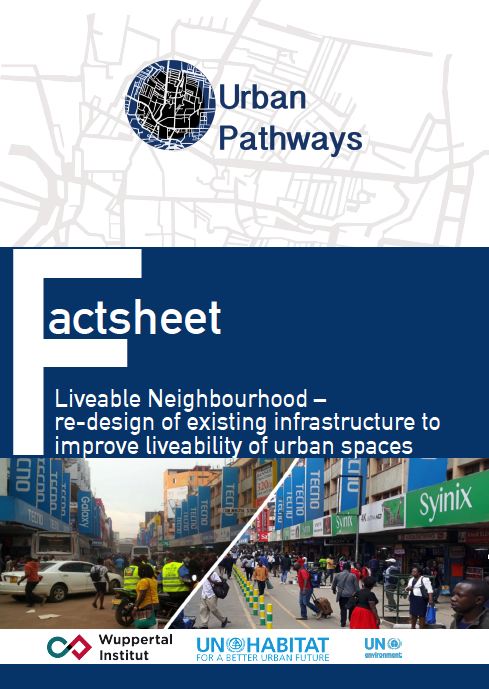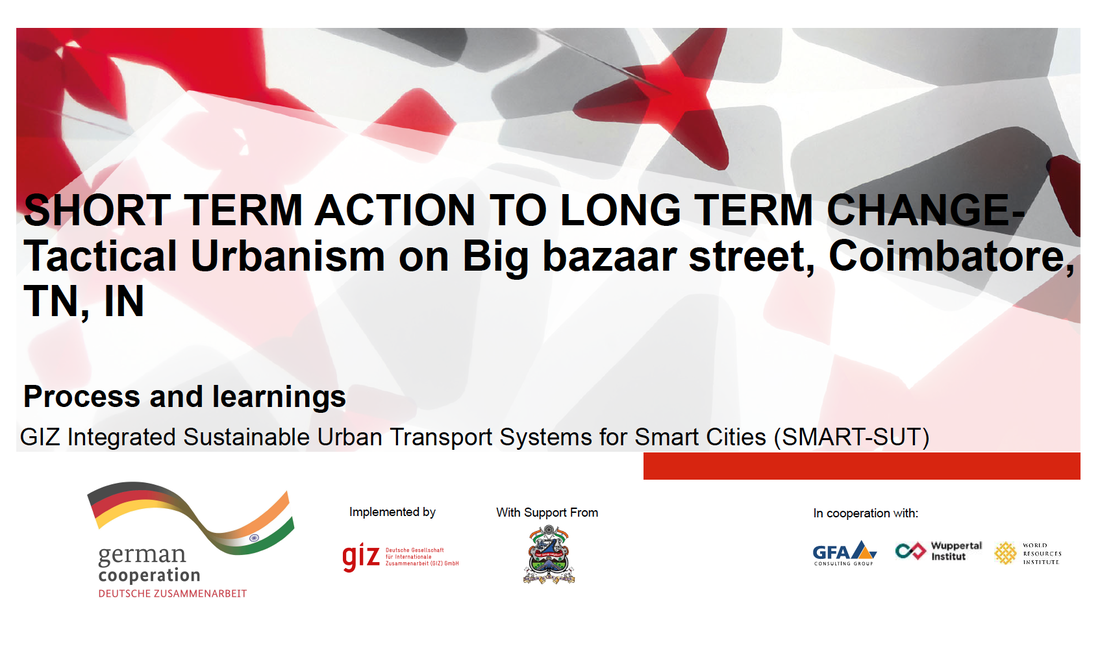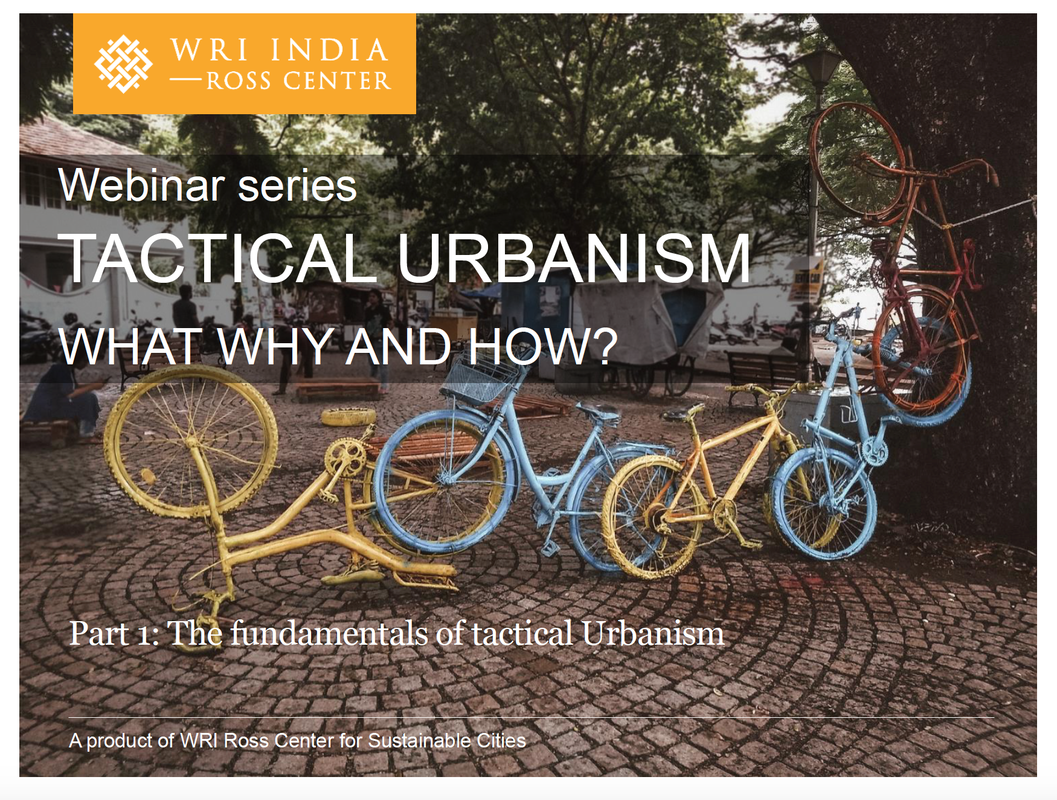Webinar Series 2020
Tactical Urbanism: What, Why and How
Tactical Urbanism: What, Why and How
Copenhagen, Amsterdam, and New York were not always as attractive as they are today! They have undergone a steady transformation. New York is the most recent to the above list. Changing the streets of New York from the streets filled with yellow taxis to streets filled with umbrellas and outdoor seating is a story worth sharing! Amidst the extensive planning process of designing and implementing public spaces in the city, the communication between city Government and users is often missed out, leading to under-used or dead spaces.
Tactical urbanism is one tool for reviving such spaces and turning them into people-friendly spaces using minimal cost and limited time, through a community-led approach. comes with a dual advantage of acting as a tool to demonstrate the design live on the ground and also helps create awareness about the need for space.
While the developing countries, particularly the Asian cities; continue to adopt this ‘people-centric approach’, it often becomes important to contextualize this process based on the densities and nature of the use of spaces.
We are eager to share with you our understanding and learning of tactical urbanism, which we gained by researching the concept, implementing it in cities and working with cities that have (or are) implementing the concept.
We hope that you will join us in this multi-part series on Tactical Urbanism. This series is brought to you by Wuppertal Institute, under the initiative „EnvironMENTALISE“ of the Urban Pathways Project, funded by the International Climate Initiative (IKI) from the German Ministry of Environment. The webinar is jointly presented with the World Resources Institute India.
Tactical urbanism is one tool for reviving such spaces and turning them into people-friendly spaces using minimal cost and limited time, through a community-led approach. comes with a dual advantage of acting as a tool to demonstrate the design live on the ground and also helps create awareness about the need for space.
While the developing countries, particularly the Asian cities; continue to adopt this ‘people-centric approach’, it often becomes important to contextualize this process based on the densities and nature of the use of spaces.
We are eager to share with you our understanding and learning of tactical urbanism, which we gained by researching the concept, implementing it in cities and working with cities that have (or are) implementing the concept.
We hope that you will join us in this multi-part series on Tactical Urbanism. This series is brought to you by Wuppertal Institute, under the initiative „EnvironMENTALISE“ of the Urban Pathways Project, funded by the International Climate Initiative (IKI) from the German Ministry of Environment. The webinar is jointly presented with the World Resources Institute India.
|
Agenda:
Webinar Part 1: Fundamentals of Tactical Urbanism on 18th Feb. 2020: In this part, we discussed on the topic in general and the fundamentals of this process, and shared with the participants a few examples and very recent experience on implementing Tactical Urbanism in India. The topics and presenters are: Creating livable cities and Tactical Urbanism: an inclusive approach Prerna Mehta Lead – Urban Development, World Resources Institute India Short term action to long term change- Tactical urbanism on Big bazaar street of Coimbatore, Tamil Nadu, India Ranjith Parvathapuram Urban Transport Expert, Coimbatore, GIZ SMART SUT Project GFA |
|
Webinar Part 2: Adopting Tactical Urbanism in your cities: In this part, we will dive into the details on how to implement tactical urbanism backed with relevant case studies and much more content that we will add based on your inputs. The topics and presenters are:
Your Tactical Urbanism Toolkit Rajeev Malagi, Senior Associate, Sustainable Cities, World Resources Institute India Success Stories The Key elements of the successful implementation of Zones 30 in Belo Horizonte, Brazil María Rosa Muñoz B., Research Fellow, Wuppertal Institute Transformation of Luthuli Avenue in Nairobi, Kenya Eng. Kuiyaki, Nairobi County, Kenya (tbc) |
|
FACTSHEET No. 1
Liveable Neighbourhood – activities to regain public space and foster social cohesion A liveable neighbourhood is a neighbourhood in which streets and public spaces invite to stay, sit, roam and play, e.g. on park-like elements or pedestrianised zones, and where walking and cycling (active mobility) is encouraged. It is now increasingly being recognised that attractive, active, well-functioning public spaces help revitalizing communities and jumpstart economic development. The New Urban Agenda emphasizes the so-called placemaking, a collaborative process of shaping the public realm in order to maximize shared value (UN Habitat 2015). |
|
FACTSHEET No. 2
Liveable Neighbourhood – re-design of existing infrastructure to improve liveability of urban spaces This factsheet now focuses on those measures that involve bigger capital investments and re-design of existing infrastructure in order to make a neighbourhood more liveable . It is important to understand that placemaking does not focus only on enhancing already existing (maybe under-used) public spaces (plazas), but also on creating new public spaces out of existing infrastructure, e.g. carving out a little plaza by re-design of a street or crossing. |

